Two Days in June
The Queen of Naples, Maria Carolina, the daughter of Maria-Theresia and the sister of Marie Antoinette of France has taken Rome and toppled the „Roman Republic“ created there as a result of the Napoleonic occupation. Baron Vitellio Scarpia, the head of her secret police, is combing the streets of the city with his spies, looking for former Republicans. On June 14th, Napoleon’s troops go into battle with the troops of the Austrian General Melas, who is fi ghting for the cause of the allied European aristocracy, in Marengo in Northern Italy. During the night of June 17th two messages about the outcome of the battle arrive in Rome: the fi rst announces the defeat of Napoleon. The queen plans a celebration in the Palazzo Farnese in honour of the general. The primadonna Floria Tosca, the mistress of the painter Mario Cavaradossi, who sympathizes with the Republican cause which now seems lost, is to sing at the celebration.
Act 1: The Church of Sant’Andrea della Valle
The former consul of the Republic, Cesare Angelotti, accused of high treason, has escaped from imprisonment in the Castello S. Angelo. He seeks refuge in the church of S. Andrea della Valle, in which the painter Mario Cavaradossi has been working for days on a picture of Mary Magdalene. When he hears footsteps approaching, Angelotti hides in his family’s chapel.
The pious verger is outraged about the political views of the painter and about the fact that the saint in his picture looks very much like a woman who comes every day to pray in the church. After the verger has left, Angelotti comes out of hiding in the chapel. Cavaradossi recognizes him and promises to help him. When he hears Tosca impatiently demanding access to the locked church he urges Angelotti to hide in the chapel again. He explains that his mistress is unable to keep anything a secret from her father confessor and would potentially be an element of risk if she knew about his fl ight. Tosca, always quick to be jealous, surmises something quite different. She suspects there is another woman with Cavaradossi and the fact that the Mary Magdalene in the picture looks nothing at all like herself but like the Countess Attavanti only increases her jealousy. Cavaradossi reassures her and, promising to spend the evening with her in his villa, impatiently urges her to leave.
Cavaradossi learns from Angelotti the reason for the daily visits of the Countess Attavanti, who without knowing it has been the model for the picture in the altarpiece. She is Angelotti’s sister and on her visits to the church she has made preparations for her brother’s fl ight and hidden women’s clothing for him. A canon shot is fi red to announce the discovery of Angelotti’s escape. Cavaradossi offers him a safe hiding-place in the garden of his villa and takes him there himself. The verger arrives with the news of the Austrian defeat of Napoleon. He calls together the clergy and the choristers for a solemn Te Deum. Scarpia has the church searched for the escaped prisoner and interrogates the verger. He, too, notices the picture of Mary Magdalene which so closely ressembles Angelotti’s sister and draws his own conclusions about the connection between the painter and the escaped. He fi nds a fan belonging to the countess and intended for her brother’s use in his escape, which he has left behind in his haste to leave the chapel.
Tosca returns in order to postpone her assignment with Cavaradossi as she has to sing at the queen’s victory celebration. Scarpia uses his fi nd, so obviously a woman’s possession, to rouse Tosca’s jealousy. She sets off for Cavaradossi’s villa, thinking she will catch her Mario out with his lover – with Scarpia’s men at her heels, who have been instructed to fi nd Angelotti’s hiding-place. The clergy are celebrating the victory of the monarchy and God’s order with the Te Deum. Before joining in with religious zeal, Scarpia admits that he is driven by quite different things than political obedience. He lustily pictures himself hanging Cavaradossi and then making Tosca, whom he has long desired, his own.
Act 2: Palazzo Farnese
The queen’s celebration is in full swing in the palace and Scarpia, who has set up his headquarters on an upper fl oor of the palace, is waiting for the performance to end. His spies bring him the news that Cavaradossi has been arrested; they have not, however, been able to fi nd Angelotti. Cavaradossi is interrogated by Scarpia, in the background can be heard the sound of his beloved‘s voice singing a cantata in praise of God at the celebration below. Cavaradossi denies all knowledge of Angelotti; Scarpia has him taken away to be tortured. Tosca arrives at Scarpia’s invitation. She cannot bear the sound of her lover’s screams of anguish as he is being tortured in an ante-chamber and reveals to Scarpia exactly where Angelotti is hiding. Cavaradossi is brought in and Scarpia enjoys telling him of Tosca’s betrayal. A new message arrives – the news of the victory from Marengo was premature, Napoleon has in fact defeated the Austrians. Cavaradossi is delighted and shows it, Scarpia reacts by ordering him to be executed. Scarpia’s agents return a second time from Cavaradossi’s villa: Angelotti has killed himself on being discovered.
Tosca begs for mercy for Cavaradossi and Scarpia offers her a deal: if she will spend one night with him, he will spare Cavaradossi, merely order a mock execution, simulated only, and make it possible for the two of them to escape from Rome with a letter of safe conduct. Tosca agrees.
Scarpia gives orders for the mock execution, everything is to be done exactly as it was in a former case. Alone with Tosca, Scarpia writes the letter, Tosca sees a knife on the table. Scarpia approaches Tosca to claim her part of the deal. Tosca stabs him through the heart. She grabs the paper from Scarpia’s hand and makes the sign of the cross, before she fl ees, over the man who loved to cause fear and terror in Rome.
Act 3: Castello S. Angelo
A new morning breaks over Rome, accompanied by the ringing of church bells. Cavaradossi is led to a platform in the castle to be shot. He writes a last letter to Tosca and fi nishes with his life. Tosca fi ghts her way through to the condemned man and shows him the safe conduct. The unexpected turn of events, Tosca’s story of her deal with Scarpia and the planned mock execution give him new strength. Tosca gives him some advice about how to pretend to be dead. The soldiers of the fi ring squad take up their position, raise their guns and fire. Cavaradossi slumps to the ground. From a distance Tosca admires the convincing act of her lover, who has no theatrical experience. When she is left alone with him she urges him to stand up. When he does not move, she runs across to him and discovers the deception: Cavaradossi is dead. Scarpia has cheated her. His body has been discovered in the meantime. His men hurry to the platform of the castle to grab Tosca. She climbs on to the balustrade of the castle wall and jumps.
Miron Hakenbeck
Translation: Susan Bollinger
Act 1
Inside the church of Sant'Andrea della Valle
Scene depicting a church interior with high stained-glass windows and heavy ornamental columns. The central figure is a high dignatory around whom several figures are kneeling, while in the background can be seen the tall pikes of the Swiss Guard.
Cesare Angelotti, former consul of the Roman Republic and now an escaped political prisoner, runs into the church and hides in the Attavanti private chapel – his sister, the Marchesa Attavanti, has left a key to the chapel hidden at the feet of the statue of the Madonna. The elderly Sacristan enters and begins cleaning. The Sacristan kneels in prayer as the Angelus sounds.
The painter Mario Cavaradossi arrives to continue work on his picture of Mary Magdalene. The Sacristan identifies a likeness between the portrait and a blonde-haired woman who has been visiting the church recently (unknown to him, it is Angelotti's sister the Marchesa). Cavaradossi describes the "hidden harmony" ("Recondita armonia") in the contrast between the blonde beauty of his painting and his dark-haired lover, the singer Floria Tosca. The Sacristan mumbles his disapproval before leaving.
Angelotti emerges and tells Cavaradossi, an old friend who has republican sympathies, that he is being pursued by the Chief of Police, Baron Scarpia. Cavaradossi promises to assist him after nightfall. Tosca's voice is heard, calling to Cavaradossi. Cavaradossi gives Angelotti his basket of food and Angelotti hurriedly returns to his hiding place.
Tosca enters and suspiciously asks Cavaradossi what he has been doing – she thinks that he has been talking to another woman. Cavaradossi reassures her and Tosca tries to persuade him to take her to his villa that evening: "Non la sospiri, la nostra casetta" ("Do you not long for our little cottage"). She then expresses jealousy over the woman in the painting, whom she recognises as the Marchesa Attavanti. Cavaradossi explains the likeness; he has merely observed the Marchesa at prayer in the church. He reassures Tosca of his fidelity and asks her what eyes could be more beautiful than her own: "Qual'occhio al mondo" ("What eyes in the world").
After Tosca has left, Angelotti reappears and discusses with the painter his plan to flee disguised as a woman, using clothes left in the chapel by his sister. Cavaradossi gives Angelotti a key to his villa, suggesting that he hide in a disused well in the garden. The sound of a cannon signals that Angelotti's escape has been discovered. He and Cavaradossi hasten out of the church.
The Sacristan re-enters with choristers, celebrating the news that Napoleon has apparently been defeated at Marengo. The celebrations cease abruptly with the entry of Scarpia, his henchman Spoletta and several police agents. They have heard that Angelotti has sought refuge in the church. Scarpia orders a search, and the empty food basket and a fan bearing the Attavanti coat of arms are found in the chapel. Scarpia questions the Sacristan, and his suspicions are aroused further when he learns that Cavaradossi has been in the church; Scarpia mistrusts the painter, and believes him complicit in Angelotti's escape.
When Tosca arrives looking for her lover, Scarpia artfully arouses her jealous instincts by implying a relationship between the painter and the Marchesa Attavanti. He draws Tosca's attention to the fan and suggests that someone must have surprised the lovers in the chapel. Tosca falls for his deceit; enraged, she rushes off to confront Cavaradossi. Scarpia orders Spoletta and his agents to follow her, assuming she will lead them to Cavaradossi and Angelotti. He privately gloats as he reveals his intentions to possess Tosca and execute Cavaradossi. A procession enters the church singing the Te Deum; exclaiming 'Tosca, you make me forget even God!', Scarpia joins the chorus in the prayer.
Act 2
The body of a man lies supine, with a woman, crucifix in hand, kneeling over him. A candle is placed to each side of his head.
Scarpia's apartment in the Palazzo Farnese, that evening
Scarpia, at supper, sends a note to Tosca asking her to come to his apartment, anticipating that two of his goals will soon be fulfilled at once. His agent, Spoletta, arrives to report that Angelotti remains at large, but Cavaradossi has been arrested for questioning. He is brought in, and an interrogation ensues. As the painter steadfastly denies knowing anything about Angelotti's escape, Tosca's voice is heard singing a celebratory cantata elsewhere in the Palace.
She enters the apartment in time to see Cavaradossi being escorted to an antechamber. All he has time to say is that she mustn't tell them anything. Scarpia then claims she can save her lover from indescribable pain if she reveals Angelotti's hiding place. She resists, but the sound of screams coming through the door eventually breaks her down, and she tells Scarpia to search the well in the garden of Cavaradossi's villa.
Scarpia orders his torturers to cease, and the bloodied painter is dragged back in. He's devastated to discover that Tosca has betrayed his friend. Sciarrone, another agent, then enters with news: there was an upset on the battlefield at Marengo, and the French are marching on Rome. Cavaradossi, unable to contain himself, gloats to Scarpia that his rule of terror will soon be at an end. This is enough for the police to consider him guilty, and they haul him away to be shot.
Scarpia, now alone with Tosca, proposes a bargain: if she gives herself to him, Cavaradossi will be freed. She is revolted, and repeatedly rejects his advances, but she hears the drums outside announcing an execution. As Scarpia awaits her decision, she prays, asking why God has abandoned her in her hour of need: "Vissi d'arte" ("I lived for art"). She tries to offer money, but Scarpia isn't interested in that kind of bribe: he wants Tosca herself.
Spoletta returns with the news that Angelotti has killed himself upon discovery, and that everything is in place for Cavaradossi's execution. Scarpia hesitates to give the order, looking to Tosca, and despairingly she agrees to submit to him. He tells Spoletta to arrange a mock execution, both men repeating that it will be "as we did with Count Palmieri," and Spoletta exits.
Tosca insists that Scarpia must provide safe-conduct out of Rome for herself and Cavaradossi. He easily agrees to this and heads to his desk. While he's drafting the document, she quietly takes a knife from the supper table. Scarpia triumphantly strides toward Tosca. When he begins to embrace her, she stabs him, crying "this is Tosca's kiss!" Once she's certain he's dead, she ruefully says "now I forgive him." She removes the safe-conduct from his pocket, lights candles in a gesture of piety, and places a crucifix on the body before leaving.
Act 3
The upper parts of the Castel Sant'Angelo, early the following morning
Roman panorama showing, centre, an arched bridge over a river with a domed building in the distance. To the right of the bridge is a large circular fortress.
A shepherd boy is heard offstage singing (in Romanesco dialect) "Io de' sospiri" ("I give you sighs") as church bells sound for matins. The guards lead Cavaradossi in and inform him that he has one hour to live. He declines to see a priest, but asks permission to write a letter to Tosca. He begins to write, but is soon overwhelmed by memories: "E lucevan le stelle" ("And the stars shone").
Tosca enters and shows him the safe-conduct pass she's obtained, adding that she has killed Scarpia and that the imminent execution is a sham. Cavaradossi must feign death, after which they can flee together before Scarpia's body is discovered. Cavaradossi is awestruck by his gentle lover's courage: "O dolci mani" ("Oh sweet hands"). The pair ecstatically imagines the life they will share, far from Rome. Tosca then anxiously coaches Cavaradossi on how to play dead when the firing squad shoots at him with blanks. He giddily promises he'll fall "like Tosca in the theatre."
Cavaradossi is led away, and Tosca watches with increasing impatience as the execution is prepared. The men fire, Cavaradossi falls, and Tosca exclaims "Ecco un artista!" ("What an actor!"). When the soldiers have all left, she hurries towards Cavaradossi, only to find that Scarpia betrayed her: the bullets were real. Heartbroken, she clasps her lover's lifeless body and weeps.
The voices of Spoletta, Sciarrone, and the soldiers are heard, shouting that Scarpia is dead and Tosca has killed him. As the men rush in, Tosca rises, evades their clutches, and runs to the parapet. Crying "O Scarpia, Avanti a Dio!" ("O Scarpia, we meet before God!"), she flings herself over the edge to her death.


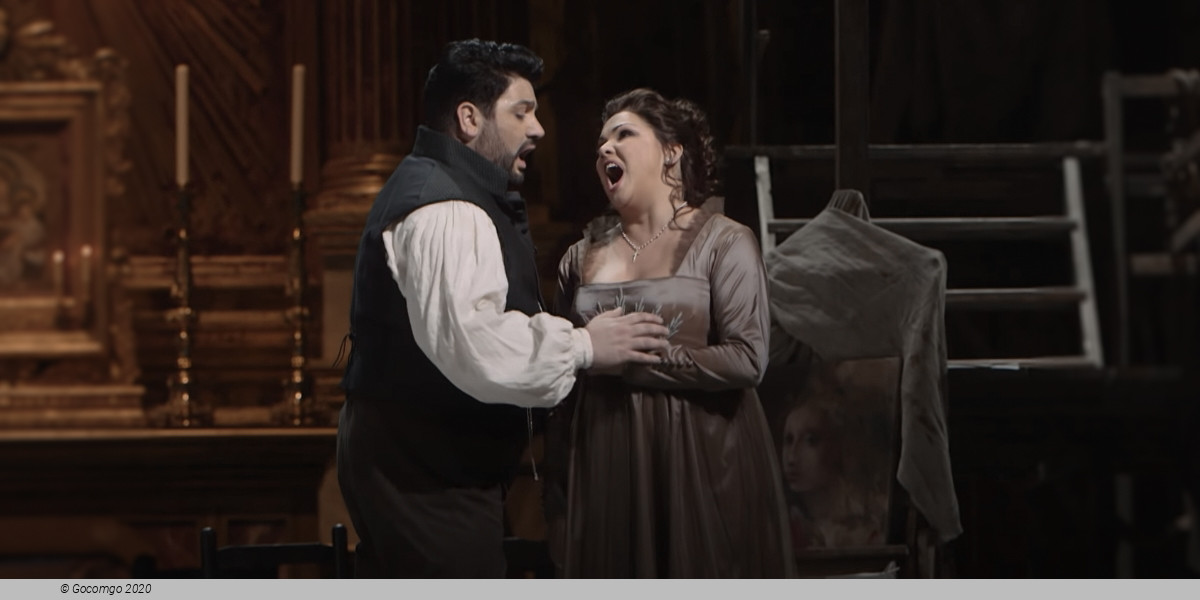
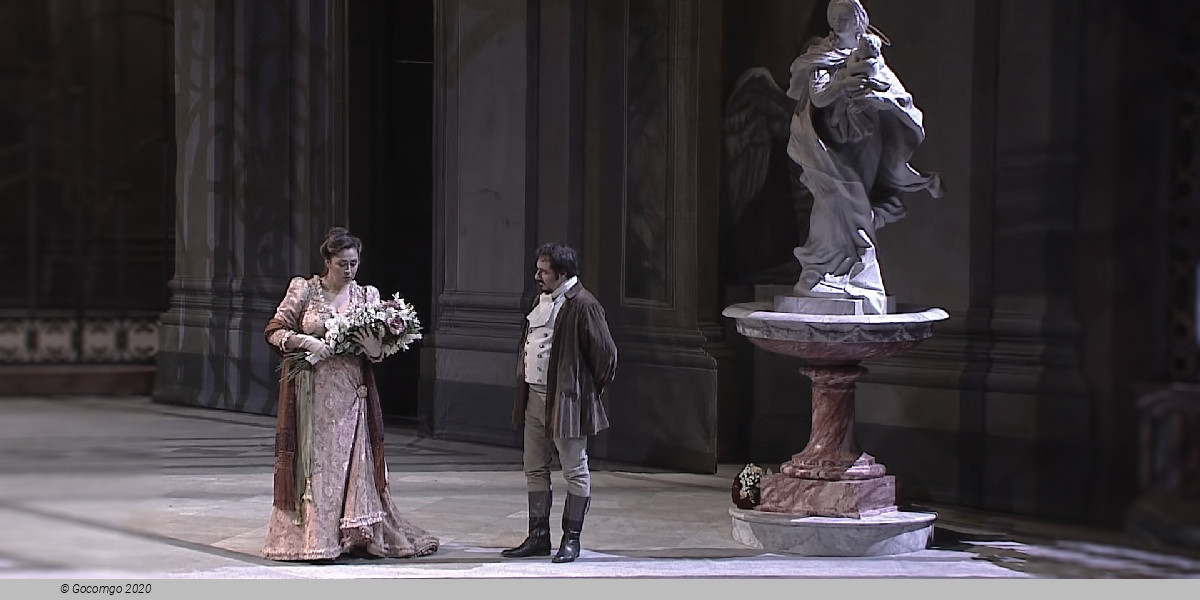
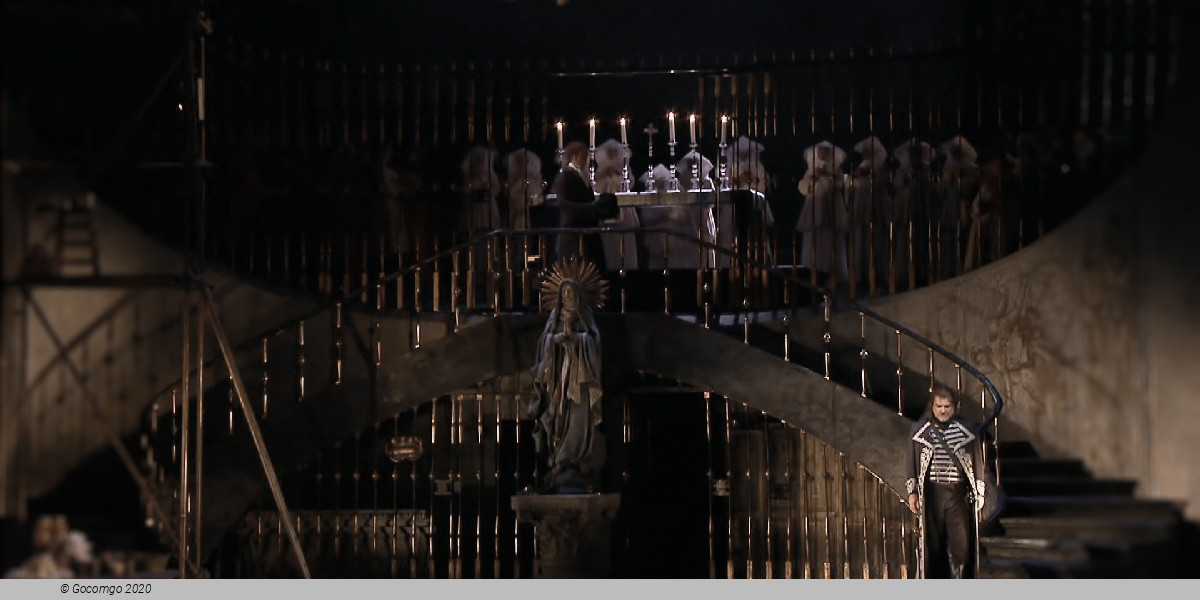
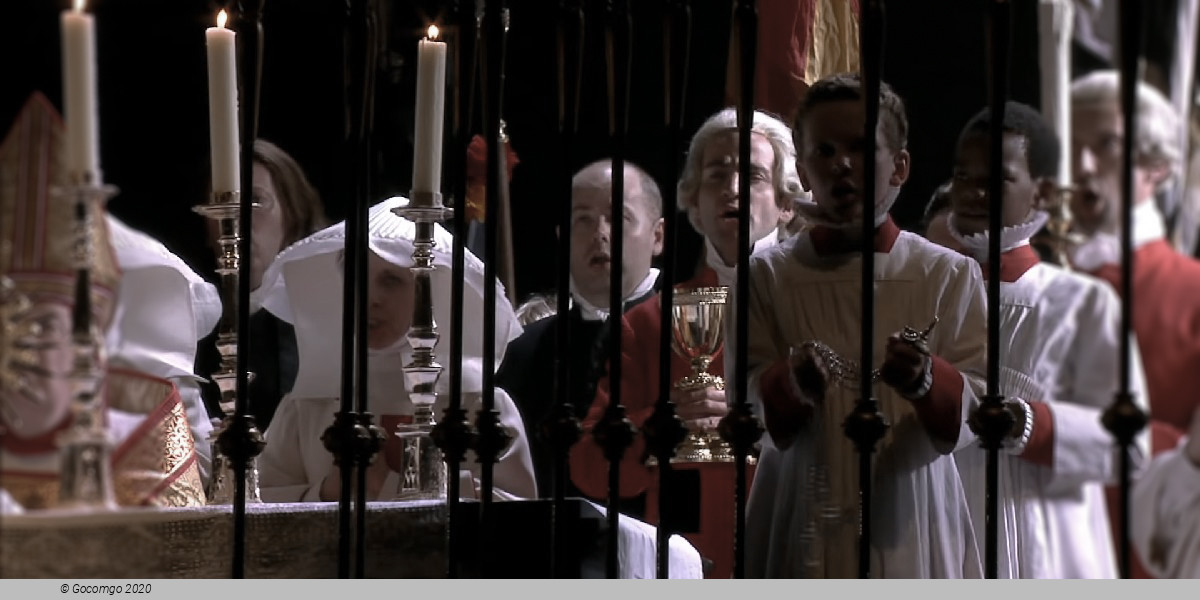
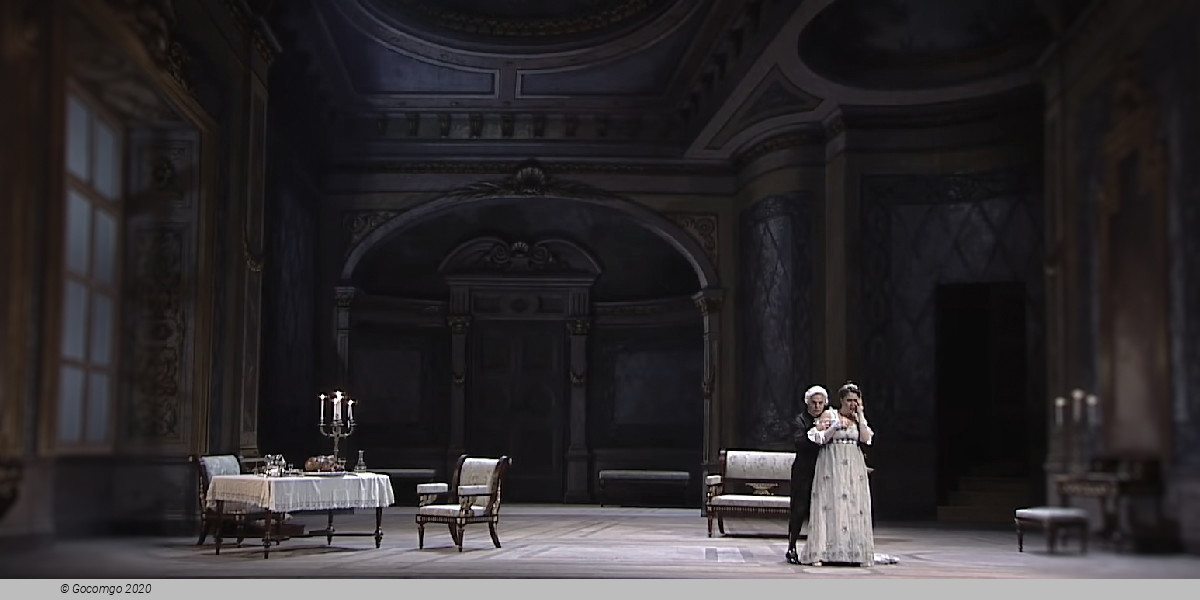
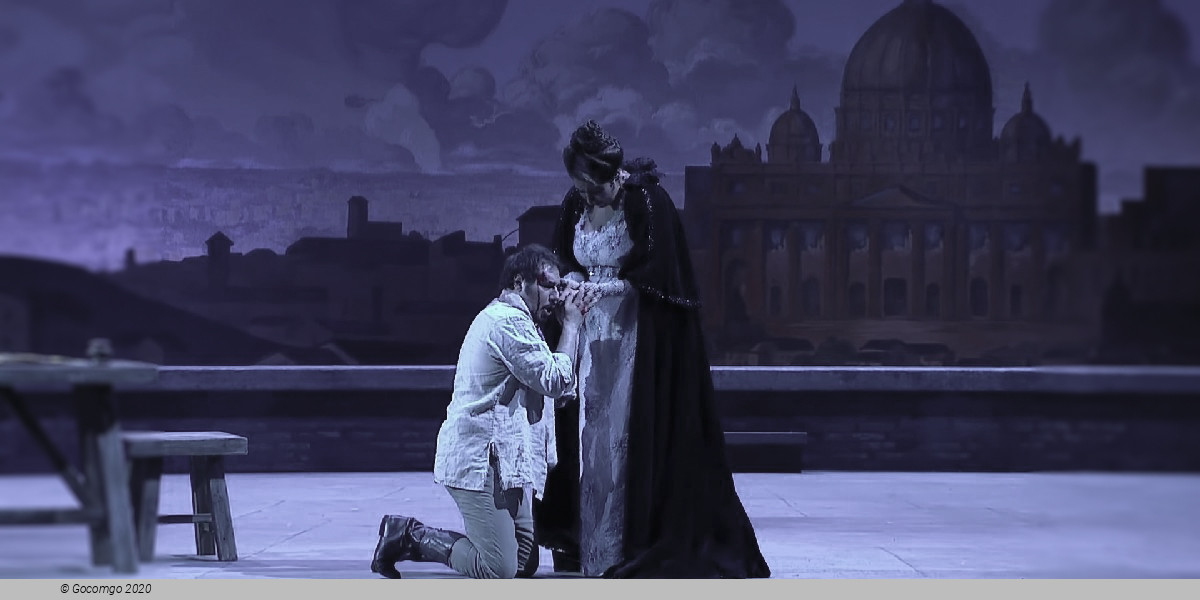
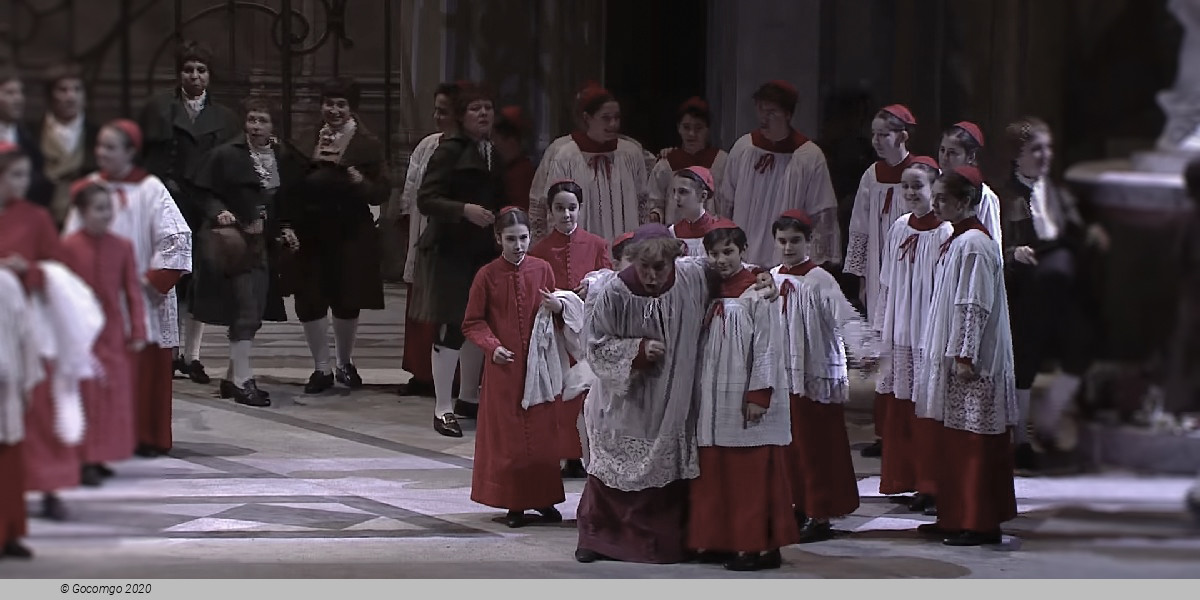
 Max-Joseph-Platz 2
Max-Joseph-Platz 2